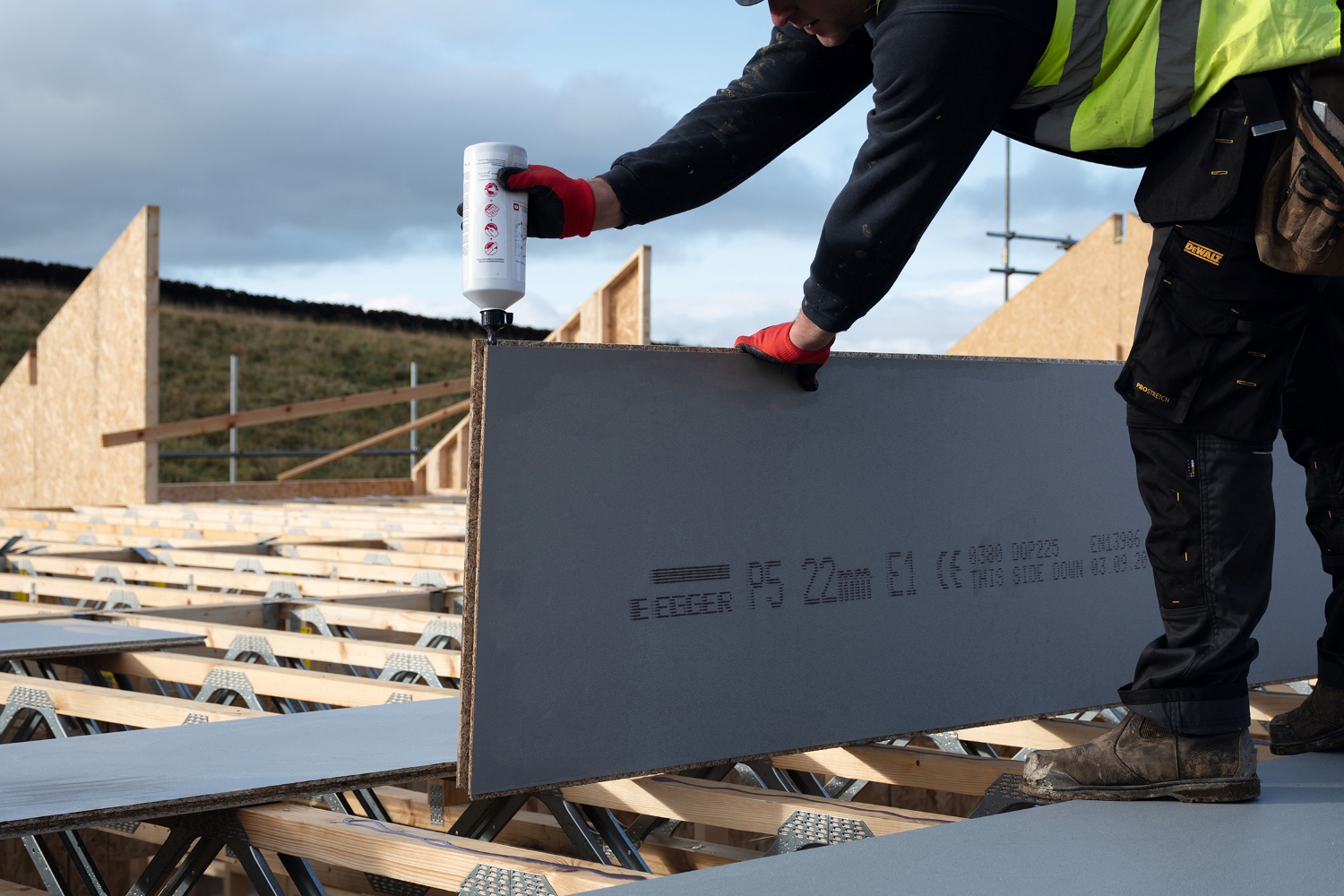
Jonathan Lynch, UK Building Product Manager at EGGER UK, explores how chipboard-based structural flooring can protect your site and your workforce.
Whether you’re working on a house extension project or building a new home, you need to have trust and confidence in the building materials and systems that you’re using. This is especially relevant when it comes to the structural flooring, forming an essential element of any property.
Statistics show that England is short of 2.5 million homes, meaning roughly 550,000 new houses must be built every year until 2031. While around 32% of UK homeowners are reportedly looking to take on a major home renovation project Such statistics are putting incredible pressure on contractors, as well as a skills shortage, supply chain worries and the need for high-quality, snag-free building processes.
For this reason, quality building materials are essential, and you need to be able to trust they will deliver on their intended purpose. Structural flooring, an integral part of any building, can also deliver much more than just a flooring surface. So, what are some of the things you should be looking out for?
Maintain the build
The UK is not famed for its fair weather, with even the summer seasons unpredictable. Of course, no one can control the weather, but you can stop it from negatively impacting your project timelines and site schedule. Consider the fact that for a certain period of time, whether it’s a new home or house extension, the structure will not be watertight. Left exposed to the weather, this could cause damage to the integrity of internal surfaces.
Look for chipboard-based structural flooring with a laminated top layer on both sides of the flooring board to help prevent moisture ingress. Check a product’s exposure rating too, with some boards, such as EGGER Protect, providing up to 100 days.

Keeping your workforce safe
Accidents can happen on projects of all scales, making safety on site one of the most important considerations as a building contractor.
As structural flooring tends to be installed early on in the building process, it can also serve as a working platform for weeks at a time. With multiple trades on site and the potential for paint, plaster and other substances to be spilled onto the floor, make sure to look for a structural flooring board that has a Low Slip Potential.
Boards will be tested for slip resistance using a Pendulum Test under BS-7976-2. This provides a Pendulum Test Value (PTV), with a value of 36 or above resulting in a Low Slip Potential being assigned to the product, values between 24 and 35 posing a moderate risk and anything under 24 noted as having a High Slip Potential. By looking out for these ratings, you can ensure your teams are kept as safe as possible on site.
Protecting your reputation
In today’s competitive market, delivering the highest quality job and service is essential and can help you to get continued good business.
Look for structural flooring boards that have a protective top layer, minimising the likelihood of damage sustained during the build (such as from heavy site traffic or dropped tools) and aiding a smoother site sign-off at the end of a project.
To further protect against call-backs, it’s important that the products you’ve installed stand the test of time. Boards with a tongue and groove profile can make for tighter and more consistent joints, protecting against moisture ingress during the lifespan of the build, when used in conjunction with a good-quality, foaming D4 adhesive. This will eliminate any changes in the flooring level and can be especially important if you’re working on bathrooms, for example, futureproofing against potential damage from a burst or leaking pipe.
If in doubt, check the product’s system guarantee, providing further assurances of its performance and giving both you and your customer added peace of mind.

Sustainability
Regardless of the size of your business, everyone working in the built environment has a responsibility to minimise their carbon footprint. It’s important that this same aim is reflected in the building products and materials fitted, with chipboard-based structural flooring a perfect example of this – a versatile, natural, carbon storing and renewable material.
Taking this one step further, look at the amount of recycled content present within the board, with most manufacturers using sawmill by-products and waste wood, as well as sustainably sourced raw timber.
EGGER Protect
EGGER Protect features a P5 chipboard core and hard-wearing, thermally bonded layer on both sides of the board. As a result of rigorous testing, Protect boards can now be left exposed to the elements for up to 100 days on site. This same laminated surface layer also ensures a safe working platform verified as ‘Low Slip Potential’ in wet conditions, significantly minimising the chance of accidents and injuries. Additionally, it can be easily cleaned once construction has completed, enabling a perfectly smooth surface for floor coverings to be laid on.
Tested under strict laboratory conditions and accepted for use on NHBC projects, you can rely on the product’s quality and durability. Builders can also benefit from the Advanced Lifetime Guarantee when boards are installed using the recommended fitting method and EGGER Joint & Joist Adhesive.
For more information on EGGER visit EGGER Protect.







